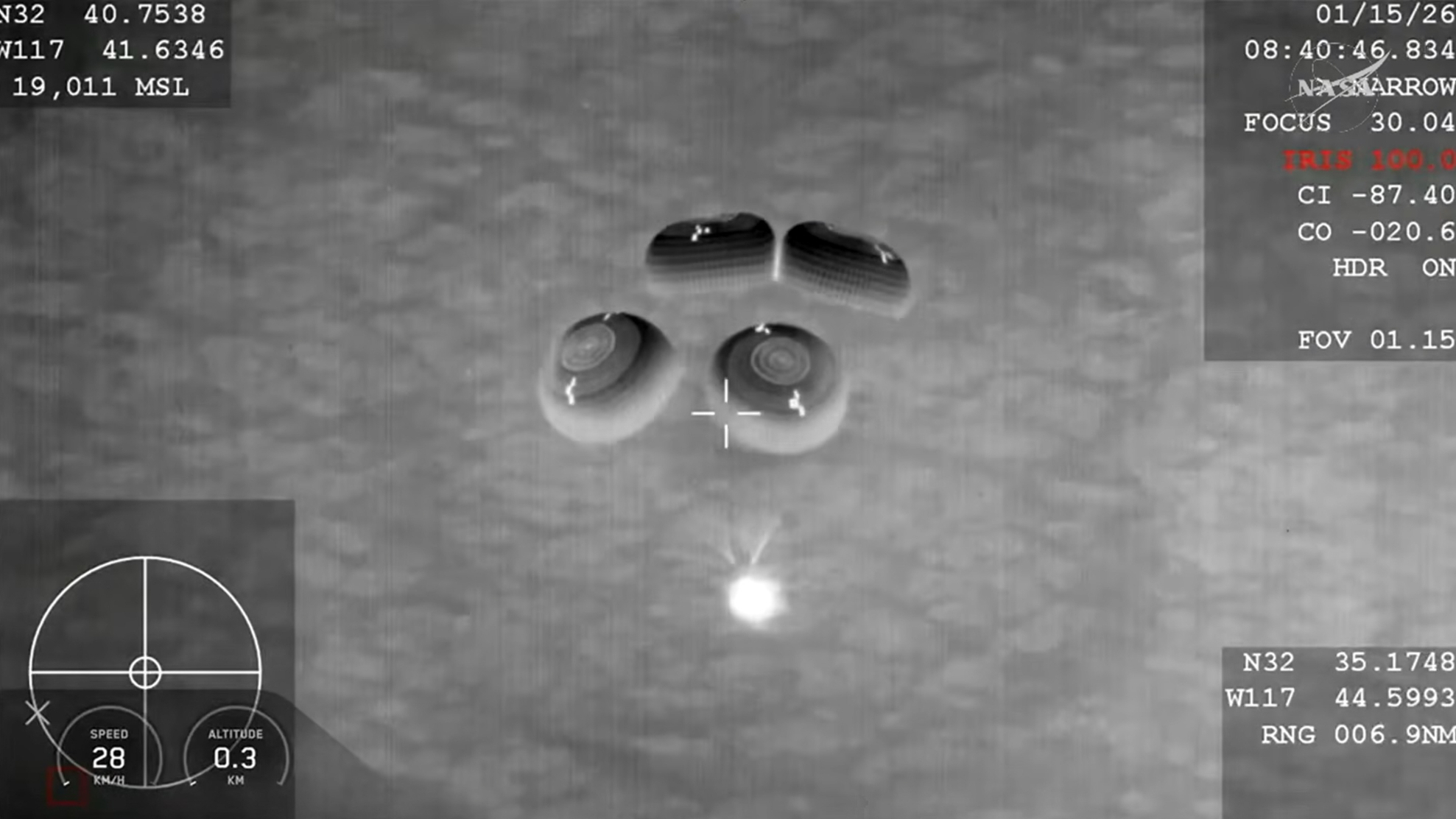SpaceX's 1st Full-Size Starship Prototype Suffers Anomaly in Pressure Test
SpaceX's first full-size Starship prototype has blown its top.
The stainless-steel Starship Mk1 experienced an anomaly during a cryogenic pressure test Wednesday (Nov. 20) at SpaceX's facilities near the South Texas village of Boca Chica. The Mk1's test campaign began just yesterday (Nov. 19), when the vehicle "breathed" during its first-ever pressure test.
SpaceX will now focus on developing more advanced prototypes rather than repair and retest the Mk1, company founder and CEO Elon Musk suggested via Twitter this afternoon.
Video: Watch SpaceX's Starship Mk1 Blow Its Lid
Related: SpaceX's Starship and Super Heavy Rocket in Pictures
"Absolutely, but to move to Mk3 design. This had some value as a manufacturing pathfinder, but flight design is quite different," Musk wrote. He was responding to a tweet by "Everyday Astronaut" Tim Dodd, who opined that SpaceX might end up transitioning to the Mk2 or Mk3, and then asked Musk directly if the company plans to "just move on to Mk3."
Absolutely, but to move to Mk3 design. This had some value as a manufacturing pathfinder, but flight design is quite different.November 20, 2019
SpaceX representatives reinforced this notion in an emailed statement Wednesday evening.
"The purpose of today’s test was to pressurize systems to the max, so the outcome was not completely unexpected. There were no injuries, nor is this a serious setback," they wrote. "As Elon tweeted, Mk1 served as a valuable manufacturing pathfinder but flight design is quite different. The decision had already been made to not fly this test article and the team is focused on the Mk3 builds, which are designed for orbit."
Breaking space news, the latest updates on rocket launches, skywatching events and more!
The Mk1 was unveiled with considerable fanfare in late September. The 165-foot-tall (50 meters) craft served as the backdrop for Musk's annual design update about Starship, SpaceX's deep-space crewed transportation system.
The architecture consists of the spaceship (also known as Starship) and a giant rocket called Super Heavy, both of which will be rapidly and repeatedly reusable. Super Heavy will launch Starship to Earth orbit, then come back down for a vertical landing, as the first stages of SpaceX's Falcon 9 and Falcon Heavy rockets already do.
RIP Starship Mk1. @LabPadre stream:https://t.co/CwiHPUf7D3 pic.twitter.com/SckLfdIhw3November 20, 2019
Starship, which Musk has said will be capable of carrying about 100 passengers, will then make its own way to the moon, Mars or any other desired locale. Mars is certainly high on the destination list; SpaceX has been developing this architecture, in its various iterations, for years, always with the end goal of helping humanity colonize the Red Planet.
Starship Mk2 is already under construction at SpaceX's facilities on Florida's Space Coast. Like the Mk1, the Mk2 sports three of SpaceX's next-generation Raptor engines. The final Starship will be powered by six Raptors, Musk has said. Super Heavy, meanwhile, will have slots for 37 of these engines.
During his September design update, Musk said that the Mk1 will fly uncrewed test flights to an altitude of 12 miles (20 kilometers) or so, perhaps before the end of the year. But that is apparently no longer in the cards.
It's unclear at the moment how much today's anomaly will delay the overall Starship test program. But SpaceX, as always, is working on an ambitious timetable. The final, operational Starship could launch satellites to Earth orbit as early as 2021, company representatives said earlier this year.
And SpaceX president and chief operating officer Gwynne Shotwell said on Monday (Nov. 18) that the company aimed to have Starship ready to make uncrewed deliveries to the surface of the moon by 2022. (NASA announced on Monday that SpaceX is eligible to bid on contracts to take agency payloads to the lunar surface using Starship.)
Editor's note: This story was updated at 7:25 pm ET to include an emailed statement from SpaceX representatives.
- Elon Musk: Revolutionary Private Space Entrepreneur
- See the Evolution of SpaceX's Rockets in Pictures
- SpaceX: First Private Flights to Space Station
Mike Wall's book about the search for alien life, "Out There" (Grand Central Publishing, 2018; illustrated by Karl Tate), is out now. Follow him on Twitter @michaeldwall. Follow us on Twitter @Spacedotcom or Facebook.


Michael Wall is a Senior Space Writer with Space.com and joined the team in 2010. He primarily covers exoplanets, spaceflight and military space, but has been known to dabble in the space art beat. His book about the search for alien life, "Out There," was published on Nov. 13, 2018. Before becoming a science writer, Michael worked as a herpetologist and wildlife biologist. He has a Ph.D. in evolutionary biology from the University of Sydney, Australia, a bachelor's degree from the University of Arizona, and a graduate certificate in science writing from the University of California, Santa Cruz. To find out what his latest project is, you can follow Michael on Twitter.

